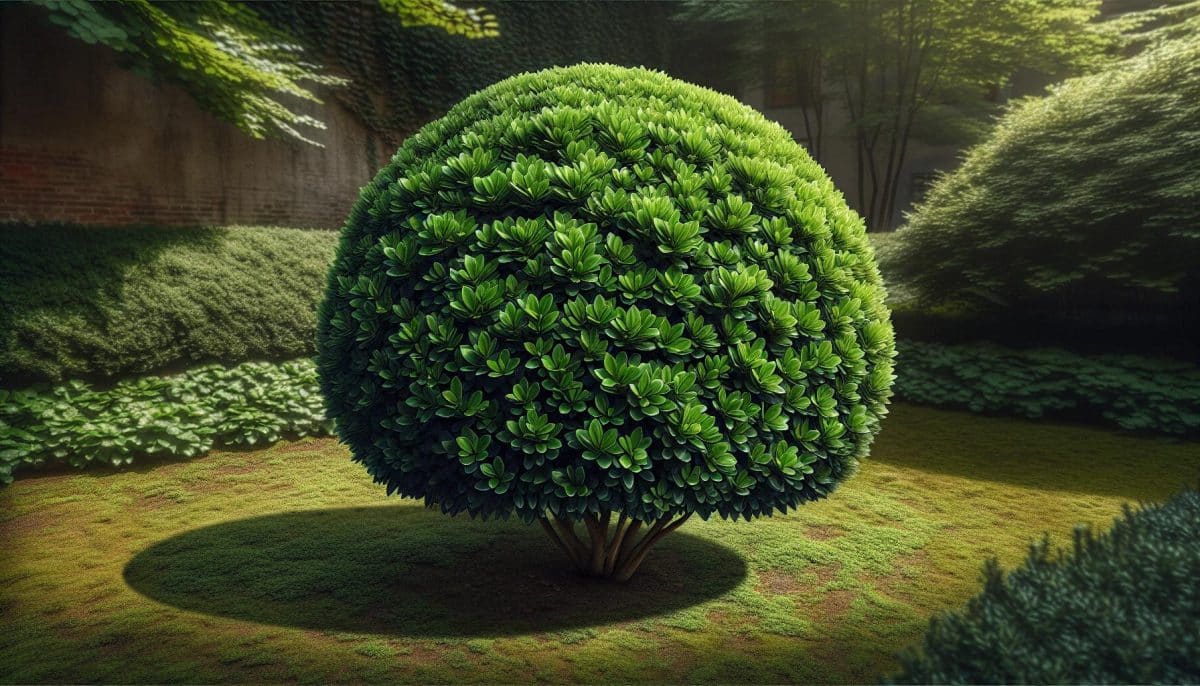
Ever thought about the type of shade your garden gets? It’s more important than you might think, especially if you’re in South Western Ontario, where the plant hardiness zones are 5 and 6a. You’ve got a variety of shade types to consider, from part sun, part shade, to open, light, medium, and deep shade, each with its own unique set of plants that thrive in it.
But here’s the kicker – you don’t need to stick to the same old exotic foliage plants like Hostas or Astilbes. Ontario is home to a diverse range of pollinator-friendly native shade plants. These are species that have adapted to thrive in the shade, offering a refreshing alternative to traditional, often invasive, shade plants. Ready to learn more? Let’s jump into the world of shade plants in Ontario.
10 Best Plants for Shade In Southwestern Ontario
Embrace the beauty and potential of your garden in South Western Ontario by incorporating perfect garden candidates that thrive under shade. Let’s investigate into a diverse range of native, easy-maintainable, and valuable shade plants that can enrich your garden with their unique colours, shapes, and textures.
Heuchera Champagne and Heuchera Marmalade are fantastic choices for height and a burst of colour with their peach, gold, and deep sienna leaves. They reach a modest 25-40 cm in height, spreading between 30-45 cm. Both thriving in the USDA zones 4-9, they offer a beautiful contrast within darker corners.
You can also opt for the Mountain Fire Japanese Pieris, boasting attractive, glossy, narrow red leaves that provide stunning visual interest in part shade conditions. Their distinct chains of white, bell-shaped flowers hanging delicately from branches in early spring enrich the diversity of a high-reaching garden.
Including ground covers and low growing perennial plants can also enhance the richness of your garden. Some native options adapt well to your locale’s conditions. Canada Anemone, Wild Ginger, and Woodland Phlox are worthwhile considerations.
Brunnera macrophylla, the Siberian Bugloss, performs remarkably well in shady conditions. Its brilliant heart-shaped leaves and sky-blue flower spread make it a delightful addition.
Finally, an ideal choice for ground cover is the Liriope muscari Variegata, often known as the Variegated lily turf. Its striped, grass-like leaves and lavender flowers add a stunning touch to any shaded garden setting.
1. Red Osier Dogwood
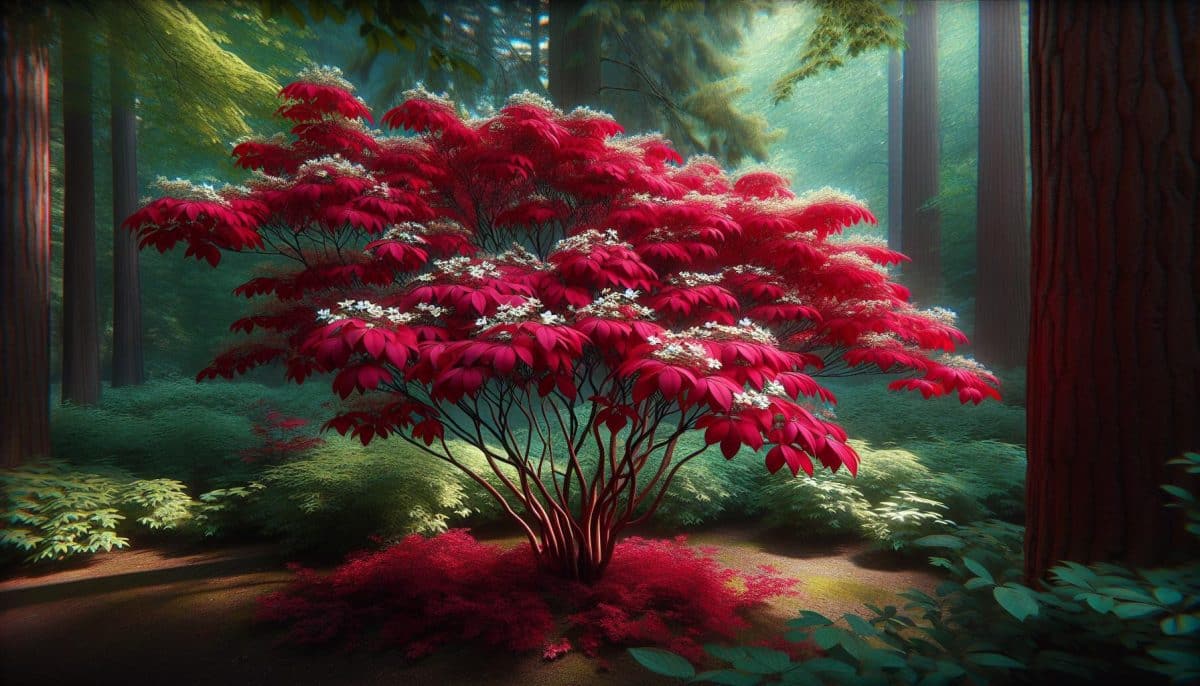
Welcome to the world of shade-tolerant plants in south-western Ontario. Our focus shifts towards the Red Osier Dogwood now. This plant brings a raw splash of nature’s canvas to your garden, with its interest-arousing colours, shapes, and textures. Don’t let shady sections of your garden languish barren when you could liven them up with this decorative gem.
Growth Details
Red Osier Dogwood’s growth is a spectacle to behold. It fills out right to the ground, making it an ideal choice if you struggle with visible barren patches on your ground surface. The showy branches are strikingly red, establishing a focus point amidst the greenery.
Specific to this plant, you’ll need to account for its adolescent growth phase. The Dogwood can stretch up to 8 feet in height while throwing its arms (branches) as wide as 10 feet in span. With these measurements, remember it’s not just a plant, it’s a towering natural monument gracing your garden. Boldly stating its presence, Red Osier Dogwood acts as the central character in your garden story.
The rich foliage maintains its verdant charm throughout the growing season. As winter closes in, the leaves turn brick-red, providing a dramatic background. But, the highlight reel doesn’t end with autumn. The Red Osier Dogwood produces clusters of creamy white flowers in late spring. Thereafter, watch this deciduous shrub bear white berries recounting tales of the Native American tribes who relished them.
Stay tuned as we journey through the deep-rooted essence and charisma of more plants in the coming sections.
2. Witch Hazel
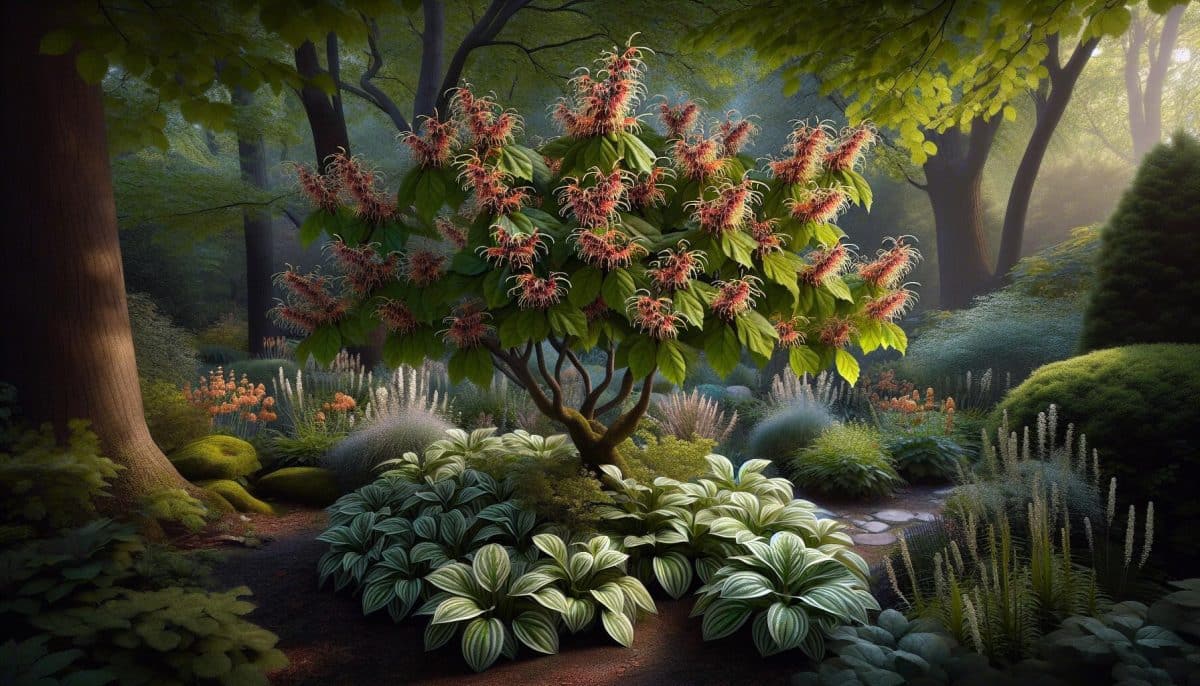
Moving from the vibrant reds of the Red Osier Dogwood, we swerve towards the enchanting world of the Witch Hazel plant. Just as Red Osier Dogwood, Witch Hazel is another shade-loving plant that dances merrily on the stage of your Southwestern Ontario garden, painting a fascinating saga of colours and growth with its unique attributes.
Growth Details
Consider the Witch Hazel – a plant that doesn’t just survive but thrives in the shadows. This enchanting species is an unusual case of thriving beauty amidst adversity. It’s an artist that paints a remarkable piece of art in the more shady nooks of your garden.
Bold and resilient, the Witch Hazel bucks the trend, sprouting just as joyfully in sunlit areas as in shaded corners. Its growth size is a perfect fit for medium gardens, allowing it to become the captivating centrepiece, or play a supportive role, complementing other plant life.
But, there’s so much more to Witch Hazel than just its appearance. Its real charm lies in its growth journey. The plant’s striking silhouettes are not a year-round feature, and it follows a captivating theme-tranformation.
During the colder months, the Witch Hazel slips into a dormant phase – only to bloom back in the spring, its blossoms blasting the world with a vibrant floral spectacle. The rest of the year displays a fascinating oscillation in colour palettes and textures – truly an interactive spectacle of nature’s artistry.
The Witch Hazel’s growth details exhibit an amazing adaptability. So the next time you’re considering to add a touch of charismatic natural beauty in your garden, remember the Witch Hazel – a plant that’s not just shade-loving, but also one that loves to tell its mesmerising story of growth and resilience in your Southwestern Ontario garden. Just as we said in the beginning, your garden is a book, and such captivating characters only make this garden story richer and more engrossing.
Stay tuned because there’s still a lot more to this garden narrative. As journeying gardeners, let’s move on to the next character in our tale – the elegant and charming Ruby Falls Redbud.
3. Ruby Falls Redbud
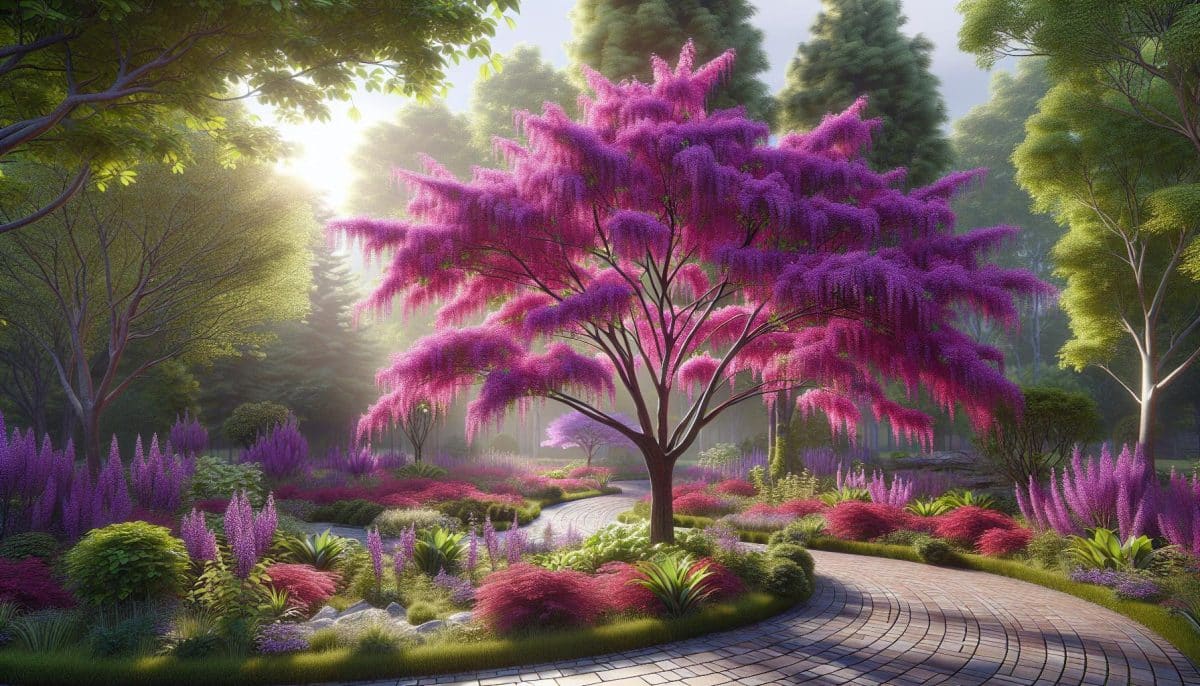
Let’s round up your dreamy shade garden with the third key player in the palette – the Ruby Falls Redbud. This plant acts as an all-rounder, offering a blend of unique beauty and resilience that styles up the onset of every season.
Growth Details
Painting a picture of sheer elegance, the Ruby Falls Redbud pairs off lavender pea-like flowers with red overtones along its branches. The real drama unfolds in early to mid-spring, even before the emergence of leaves. What’s more, it boasts burgundy foliage that initially shows off a brick-red tone in spring.
Its heart-shaped leaves are top-drawer ornamental pieces that turn yellow when fall arrives. With an average growth size of 8 feet in height and 6 feet in width, it ideally fits underneath power lines. This medium-growth-rate beauty can live for 60 years or more under ideal conditions, that’s a lifetime of beauty in one-shot!
How about sunlight preferences? Just like it’s peers, the Witch Hazel and Red Osier Dogwood, the Ruby Falls Redbud also loves a mix of full sun to partial shade. These conditions help it to maintain a low canopy of around 1 foot from the ground.
But, here’s something you need to bear in mind. It loves moist surroundings and can’t stand dryness. So, it’s key to keep it from drying out. Applying a thick mulch layer around the root zone during winter can guard it against harsh weather conditions in exposed areas and cold microclimates. This plant is after all, a selection of a native North American species.
While we’ve now stirred the intrigue about the Ruby Falls Redbud enhancing the beauty of your shaded gardens, and probably got your green thumbs twitching already, let’s remember there are more shade-loving plants awaiting introduction. Among them, the curious Jeddeloh Hemlock, the robust Bottlebrush Buckeye, and the humble Lady Fern all have a tale to tell. Stay tuned to unravel how they and others can add a burst of life to your dream garden.
4. Jeddeloh Hemlock

In your quest to fill your shaded gardens with unique plants, one standout addition you must consider is the Jeddeloh Hemlock. Exceptionally versatile, this plant gifts your garden with a vibrant green hue, providing a soothing escape throughout the year.
Growth Details
Jeddeloh Hemlock is a hardy plant that thrives in a variety of settings, from full shade to partial sunlight. Thanks to its robust nature, this plant requires less maintenance, but adores high-quality, moist, well-draining soil for optimal growth. This plant stands out due to its nest-like structure, creating intriguing aesthetic spaces within your garden that visitors won’t be able to resist admiring.
Typically, a mature Jeddeloh Hemlock can grow up to 3 feet in both height and spread, but it may vary somewhat. Keep this in mind when spacing out these plants, as their width can provide substantial ground coverage, particularly beneficial if you wish to stave off unwanted weeds. Not only does it add a pop of colour to your garden, but it also proves itself to be a hardworking, multi-tasking component of your world.
Finally, because of their resilience, these Hemlocks keep their colour all year round, turning your garden into a year-long oasis that steps away from the ever-changing colours of the seasons. No month will catch these plants off guard, reassuring consistency through your garden journey.
So, are you ready to infuse unique charm and tranquillity into your shaded garden? If so, Jeddeloh Hemlock is waiting for you to welcome it to your garden space.
5. Bottlebrush Buckeye
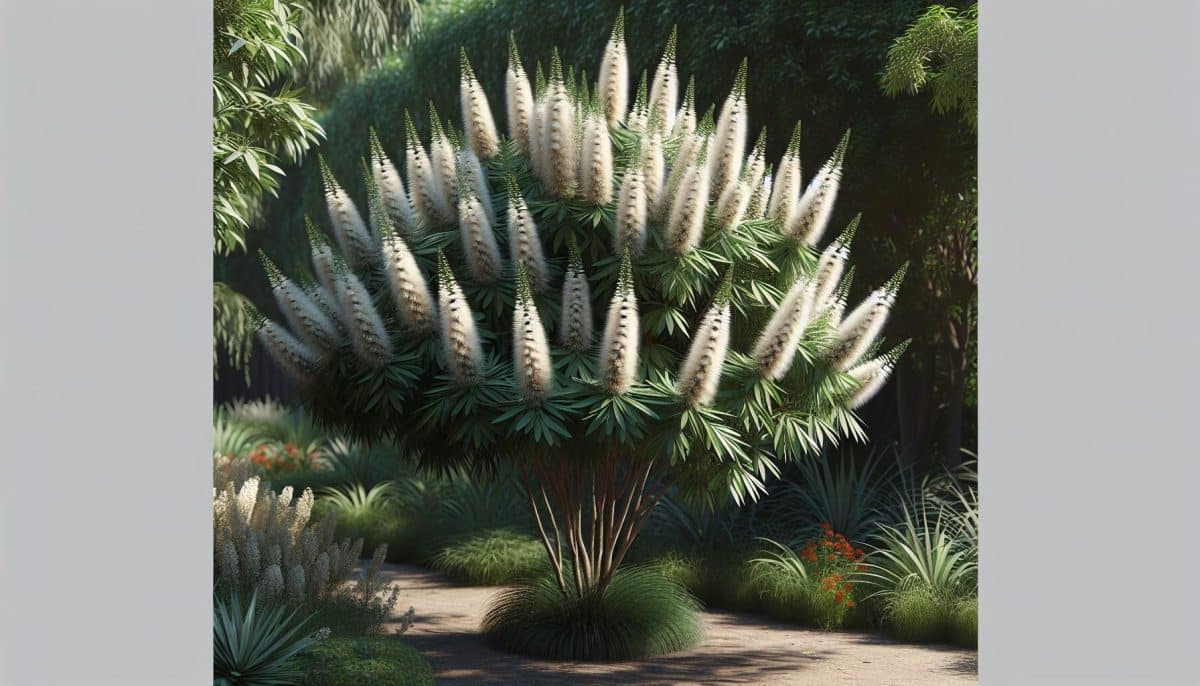
Bottlebrush Buckeye is an impressively striking plant for your shaded garden. With its characteristically showy spikes of white flowers and vibrant, dark green foliage, this plant transforms your garden into a visual paradise from early summer.
Growth Details
Growing to an impressive 8 feet in height and spreading almost 12 feet in width, Bottlebrush Buckeye certainly knows how to make its presence felt. It’s an excellent choice for those seeking to fill in the ground in garden spaces and eliminates the need for filler plants in the front.
Even more, it’s well-suited to being planted under power lines, and with its slow growth rate, you won’t need to worry about inconvenience. In ideal conditions, this hardy plant can live for 50 years or more, ensuring a lasting natural sanctuary in your garden.
In terms of light, full sun or full shade, neither is an issue for the Bottlebrush Buckeye. It thrives in a wide range of conditions but prefers a moist environment. Don’t let it dry out. You could consider applying a thick mulch around the root zone in winter to protect it from colder microclimates.
Being a native species over significant parts of North America, Bottlebrush Buckeye is a great choice for a shaded garden in Southwestern Ontario and beyond. It is less fussy about soil type and temperature and can bring a spark of wildlife to any garden setup.
6. Lady Fern

Step into the charming world of Lady Fern, an enchanting shade plant that can add an elegant touch to your shaded garden world. Its delicate structure and striking color can mesmerize you, making your garden a peaceful sanctuary.
Growth Details
You’ll find the Lady Fern highly captivating with its form, shape, and colour. Being a dense, herbaceous fern, it displays a shapely form with gracefully arching fronds. This exotic green plant brings an incredibly fine and delicate texture into your garden, enhancing its visual appeal.
| Growth Size | Light Preferences |
|---|---|
| Height: 18 inches; Width: 24 inches | Full Shade to Full Sun |
What’s particularly notable about this fern is its dense foliage that extends right to the ground, making it unique. Unlike most other ferns, the Lady Fern doesn’t require filler plants in front. Instead, it provides a luscious green carpet in your shaded garden spots.
The plant has a slow growth rate, which means it’s longevity-focused. Under ideal conditions, you can expect it to thrive for approximately 15 years, filling your garden with beautiful, verdant greenery year after year.
Lady Fern is adaptable, resilient, and stunning – a truly exceptional addition for gardeners seeking tranquillity in the scenery. Remember, but, like all ferns, it primarily thrives in a moist and cool shade. Keep this in mind while planning its location in your garden.
Remember gardening is an exploration, a chance to connect with nature. It’s about observation, patience, and passion. Lady fern offers these experiences, a plant with so much character and charm to explore. Play with its texture and form in your garden composition; whether standalone or part of a larger design, it surely makes a delightful impression.
Let your garden tell its story with the Lady Fern. It fits seamlessly into any shade-tolerant garden plan. Its delicate texture and beautiful fronds add a new dimension to your garden, a testament to the beauty and resilience of nature. Have you got a spot ready for the Lady Fern in your shaded sanctuary?
7. Variegated Solomon’s Seal
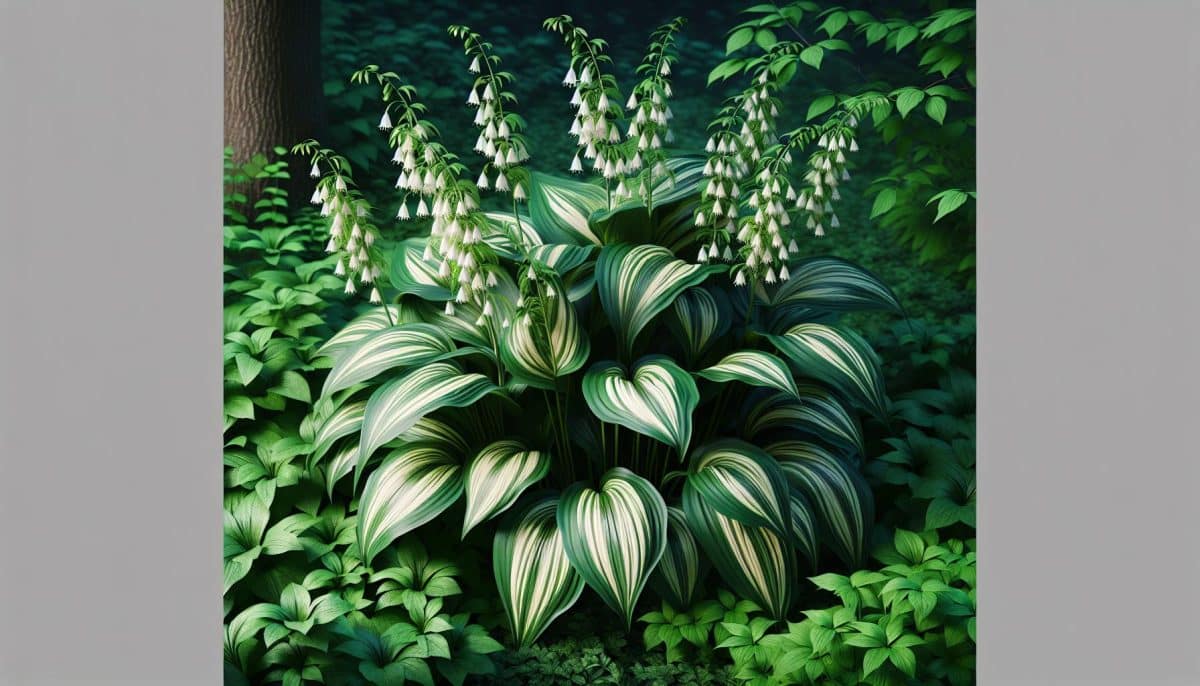
When creating your shade garden, Variegated Solomon’s Seal is a charismatic choice that can’t be overlooked. Its unique features and growth patterns make it a true asset in your patch of nature. Let’s dive deeper to understand these particulars.
Growth Details
Standing tall at about 24 inches at maturity, Variegated Solomon’s Seal spreads nearly 3 feet across. When planning your garden layout, account for an approximately 30-inch spacing between individual plants. This ensures that each plant has enough room to flourish.
The dense spread of this plant right to the ground eliminates the need for facer plants in front. Showcasing medium growth rate, this unique plant under ideal conditions can be expected to thrive for an impressive 10 years.
What’s more, the Variegated Solomon’s Seal is a lover of shadows, thriving best in partial shade to full shade. It’s rather picky about its soil conditions, strongly preferring moist to wet soil, and rich, acidic environments.
| Aspect | Detail |
|---|---|
| Growth Size | 24 inches (height), 30 inches (width) |
| Sunlight requirement | Full shade – Part sun |
| Ideal growth conditions | Rich, acidic, moist to wet soil |
| Lifespan | Approx. 10 years |
Although this plant is a selected variety of species not originally from North America, it’s renowned for its striking features around the globe. You will be enchanted by its dainty, lightly-scented, nodding white, bell-shaped flowers that sprout along the stems in late spring. The pointy pinnately compound leaves don a showy green colour with captivating creamy white variegation.
Wait for the fall for another spectacle when the foliage turns into a stunning gold. Mid-summer brings deep purple berries, adding another layer of dimension to your garden aesthetic. But, remember this plant is known to be toxic to humans and animals, so caution is advised while planting it around children and pets. Nonetheless, Variegated Solomon’s Seal will lavishly award your careful attention and nourishment with a robust display. Your shade garden will never see a dull day with this vibrant tenant.
8. Tigereye Coneflower
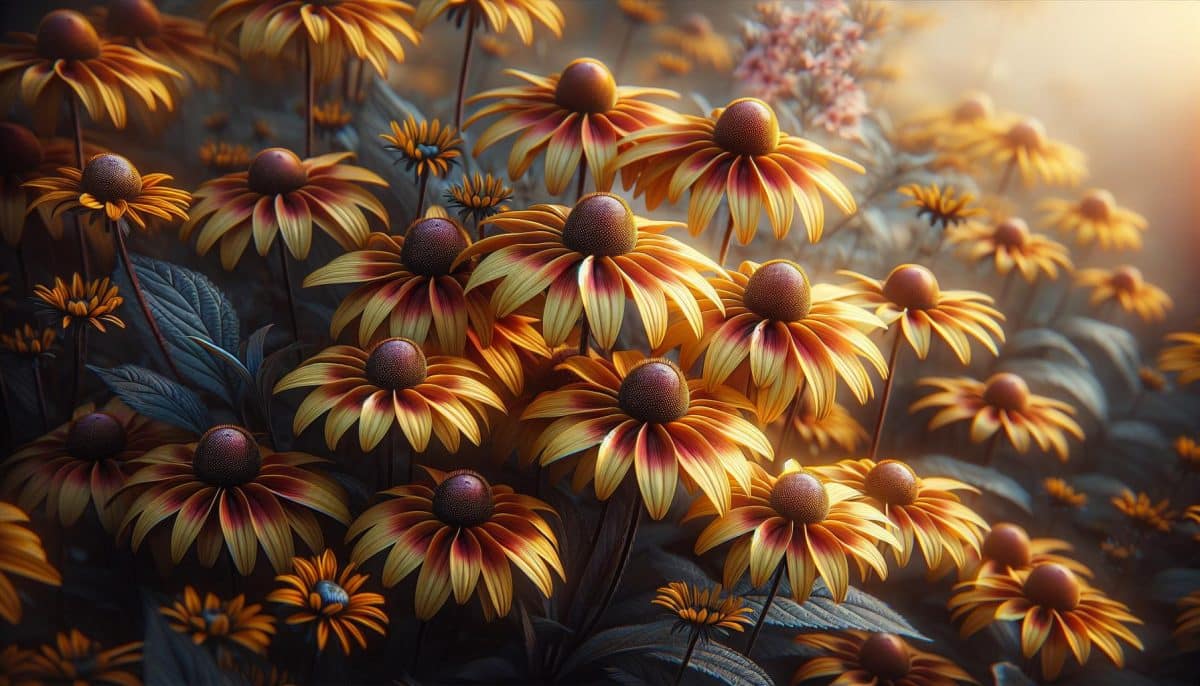
The Tigereye Coneflower is an exceptional addition to your shade garden, conspiring to amplify the aesthetics with its inviting yellow daisy flowers accentuated by burgundy eyes and gold centres. These flowers put on a show from mid-summer to mid-fall, and when they’re planted in groups, the effect heightens – similar to a painting getting its finishing touches.
Growth Details
Accommodating the Tigereye Coneflower in your garden is a walk further into the woods of beauty. This plant, maturing at a height of around 16 inches, or 24 inches when you count the flowers, spreads its charm as far as 24 inches across. It’s a quick-grower, darting towards splendid maturity under ideal conditions. Now, you should keep in mind its spatial needs whilst designing your dream garden – a gap of approximately 18 inches between individual plants is recommended.
Don’t worry, this isn’t a flighty, fleeting beauty. This plant is pretty committed to its purpose and is expected to live for about 10 years, adding to your garden’s allure. It welcomes sunlight, seeming to prefer part sun and part shade, making it a striking contribution to the shade gardens of Southwestern Ontario.
Embrace this mesmerising botanical personality, and your garden becomes a testament to inherent splendour, coursing through the colour spectrum from the vibrant yellow of summer to the enigmatic gold of fall. Your Tigereye Coneflowers, with their pointed, serrated leaves that stay green all year round, could be the star attractions, popping against the backdrop of a shade world. This, quite like an ensemble cast in a theatre, perfectly choreographed yet retaining its individuality.
If you’re on the hunt for the best shade perennials for your garden, the Tigereye Coneflower should definitely strike a chord. Its beauty is not just skin-deep – it’s in the roots, stemming from its adaptability to grow in different conditions, combining durability with desirability. Isn’t it fascinating how a plant can encapsulate so many wonderful properties, all while adorning your garden with its magnetising allure and easy-to-grow nature? Befriend the Tigereye Coneflower, and you’ve got a loyal companion in your gardening journey, one whose elegance elevates the aura of your sweet sanctuary.
9. Green Velvet Boxwoods
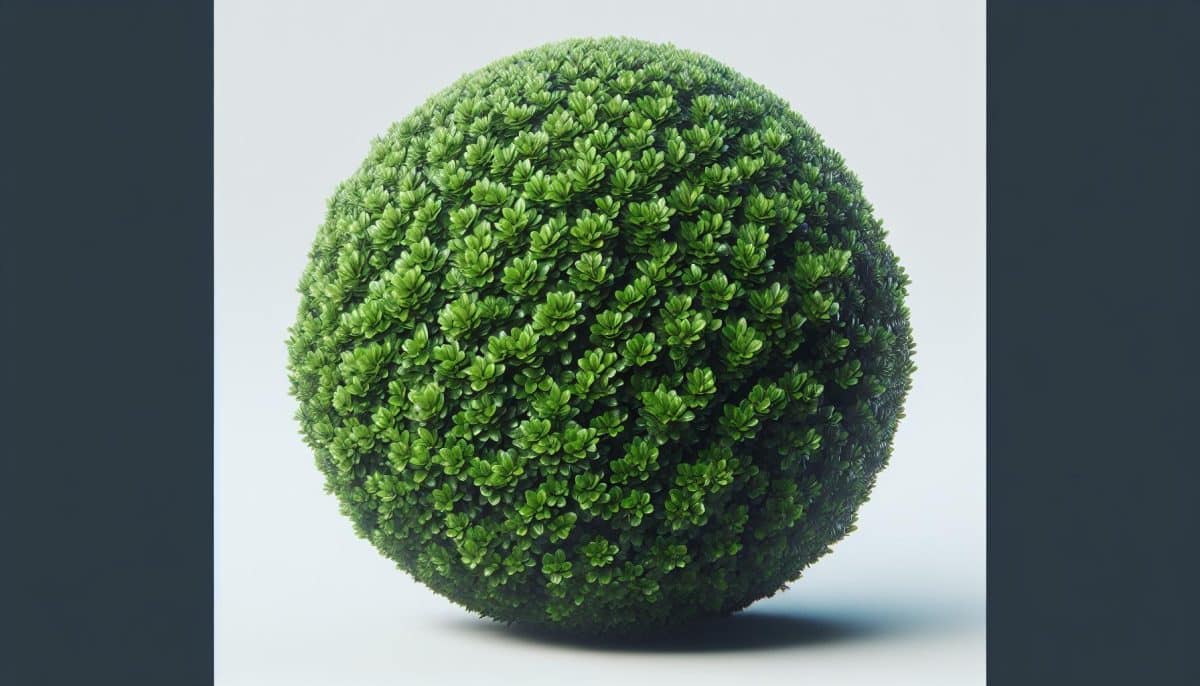
If you’re keen on adding layers of texture and interest to your shade garden, the Green Velvet Boxwood is an excellent choice to consider. This adaptable shrub welcomes both dry and moist locations in your garden, performing brilliantly under typical garden settings. The bonus part? It’s drought-tolerant, making it a perfect fit for a low-water garden or xeriscape application.
Growth Details
Its forest green leaves that stay vibrant throughout winter enhance this plant’s appeal even more. When it comes to size, this vibrant shrub won’t disappoint. With an average growth height of 3 feet and width of 4 feet, Green Velvet Boxwood takes on an almost spherical shape when fully matured. It efficiently fills out to the ground, eliminating the need for filler plants in front.
Another crucial factor to remember is its slow growth rate. But don’t let this discourage you. Given ideal conditions, this low-maintenance shrub can be expected to grace your garden for approximately 30 years.
| Fact | Details |
|---|---|
| Lifespan | Approx. 30 Years |
| Sunlight | Partial Shade to Full Sun |
| Growth Size | 3ft Height, 4ft Width |
Indeed, with its charm, adaptability, and long lifespan, the Green Velvet Boxwood is an exceptional addition to any Southwestern Ontario shade garden.
10. Mountain Fire Pieris
So, you’ve explored the wonders of the Green Velvet Boxwood and how it can transform your shade garden. But let’s not stop there. Consider the Mountain Fire Pieris. It’s another shade-loving plant that thrives in Ontario’s climate. With its fiery red leaves in spring, it’ll add a pop of colour to your garden. It’s a hardy plant too, tolerating cold winters and dry summers. So, whether you’re a seasoned gardener or a novice, there’s a shade plant out there for you. From the versatile Green Velvet Boxwood to the vibrant Mountain Fire Pieris, your shade garden in Ontario can be a lush, thriving oasis. Remember, it’s not just about choosing plants that survive, but plants that thrive. And with these options, your garden will do more than just survive, it’ll flourish.
Colin Macmillan is a seasoned entrepreneur and the CEO of Riverwood Landscape, a leading landscaping company based in Canada. He has been at the helm of the company since leaving high school, demonstrating his strong leadership skills and business acumen.
Colin’s expertise lies in various aspects of landscaping, including lawn care, interlocking, sod installation, and commercial maintenance. His hands-on approach and dedication to the craft have been instrumental in building Riverwood Landscape into a reputable brand.
One of his most notable achievements is the creation of a successful landscape franchise that services multiple locations. This accomplishment underscores his strategic thinking and ability to scale operations effectively.
Colin has also had the privilege of working with Guelph Hospital for landscaping and maintenance, a testament to the trust and reliability that his company has earned over the years.
His professional mission is to offer the best services and experiences for customers, a goal that he tirelessly pursues. Colin’s commitment to excellence and customer satisfaction continues to drive the growth and success of Riverwood Landscape.







